Mannlicher vs Mauser
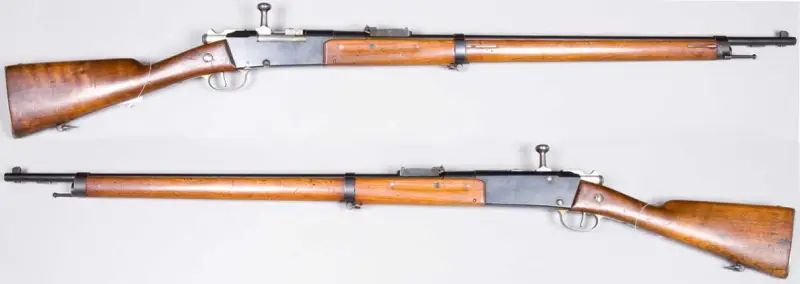
It all started with her! 8-mm eight-shot Lebel rifle 1886 (Lebel Mle. 1886). Army Museum, Stockholm
but his rival comes
and explores it.
Proverbs of Solomon, 18:17
People and weapon. We continue our story about Mannlicher rifles, since his contribution to the arms industry is so great that it deserves the closest consideration. Moreover, his designs influenced the design of rifles of other well-known systems, including ... the famous Mauser rifles. True, Mauser himself is not to blame for this, but nevertheless history With the Germans borrowing Mannlicher's developments, it is simply impossible to get around.
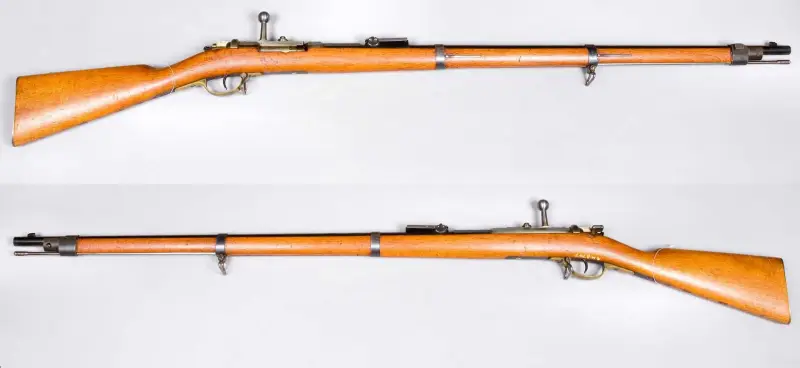
Mauser rifle 1871 caliber 10,95 mm also with an under-barrel magazine. Except she was shooting with black powder cartridges! Army Museum, Stockholm
And it so happened that in 1886 a truly epoch-making event happened in Europe: in France they adopted the Lebyal M1886 rifle with an under-barrel magazine for eight rounds.
In Germany - the main potential enemy of France - at that time a similar Mauser rifle was already in service, also with an Alfred von Kropachek under-barrel magazine for eight rounds of the 1884 model - a conversion of the 1871 rifle, designated Gewehr 71/84.
It was also adopted by the Turkish army, and in 1887 it was again converted (Gewehr 71/87), placing a ramrod on the side and placing a second lug at the rear of the bolt. The cartridge it used was 9,5x60R, and it was because of it that it became the last rifle in the world to use the cartridge... with black powder.
And it was precisely in the cartridge, and not in the magazine, that the problem lay!
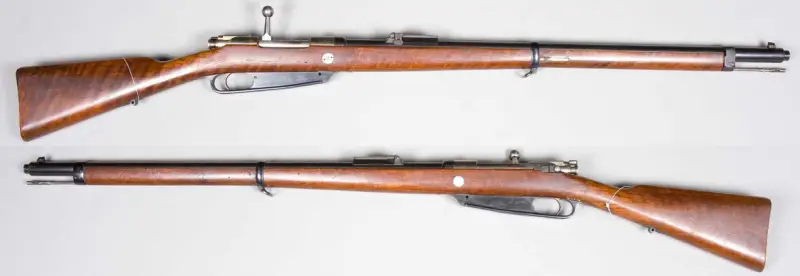
German “commission” (or “state”) rifle - “German response to the French challenge” - Gewehr 88. Army Museum, Stockholm
The fact is that the French rifle fired cartridges with smokeless powder and had a caliber of 8 mm, and previous French rifles were 11 mm! Thanks to this, the speed of the bullet increased sharply, its flatness increased, and in accuracy it surpassed German rifles, which immediately became outdated.
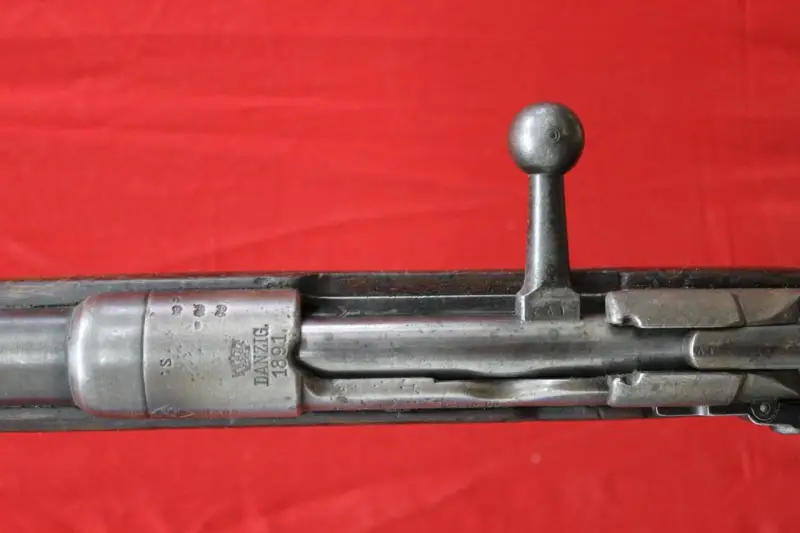
The bolt of the Gewehr 88 rifle, model 1891, produced in Danzing for Turkey. On it, pack loading was replaced with clip-on loading. Author's photo
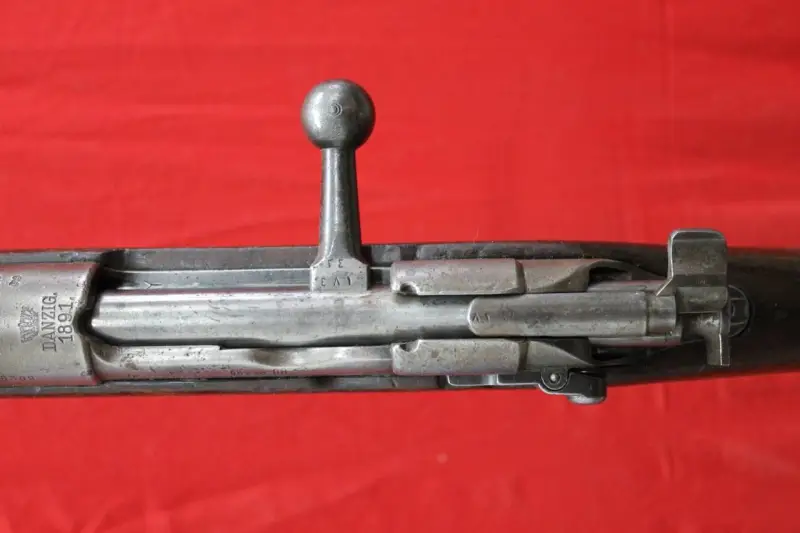
The reversible safety lever is clearly visible at the rear of the bolt. And on the jaws of the bolt frame there were recesses for the clip. Author's photo
It is clear that the Germans did not want to come to terms with this state of affairs and urgently created a weapons commission (GewehrPrufungsKomission), which was tasked with creating a rifle that was supposed to surpass the French model.
For some unknown reasons, the German military did not want to contact Mauser’s company and place an order for a new rifle for him. At first they thought they would simply reduce the caliber of the old rifle and replace the gunpowder in the cartridges from black to smokeless. But... they decided that it would be more correct to create the rifle anew, and chambered for the new Patrone 88 cartridge with an 8-mm blunt-pointed bullet (diameter 8,08 mm) *, which differed from other cartridges of that time in the absence of a rim.
Having dealt with the cartridge, the commission took up the magazine and... opted for the magazine of the Austrian Mannlicher M1886 rifle. And the barrel was taken from a Lebel rifle, borrowing from it both the shape and the pitch of the rifling**.
But the bolt for it was developed by the German designer Louis Schlegelmilch from the state arsenal in Spandau. That is, the leading German rifle manufacturer of that time, Mauser, had nothing to do with the development of this new rifle.
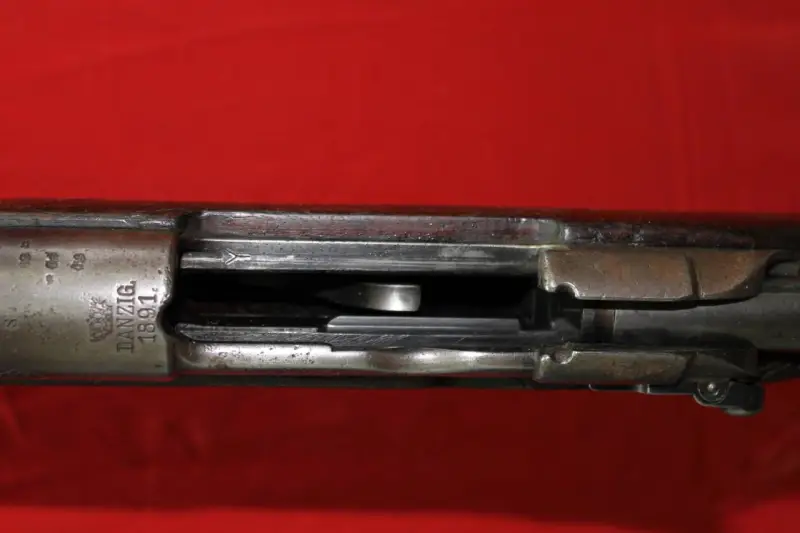
Rifles for Turkey were converted to be loaded using a clip. But the old “pack” cartridge feeder lever was left unchanged. They decided not to replace it, because every little thing in a weapon costs money! Author's photo
Tests of the “commission rifle” - it was called so because it was created by a “commission” - were completed in November 1888, and were immediately put into service, designated Gewehr 88.
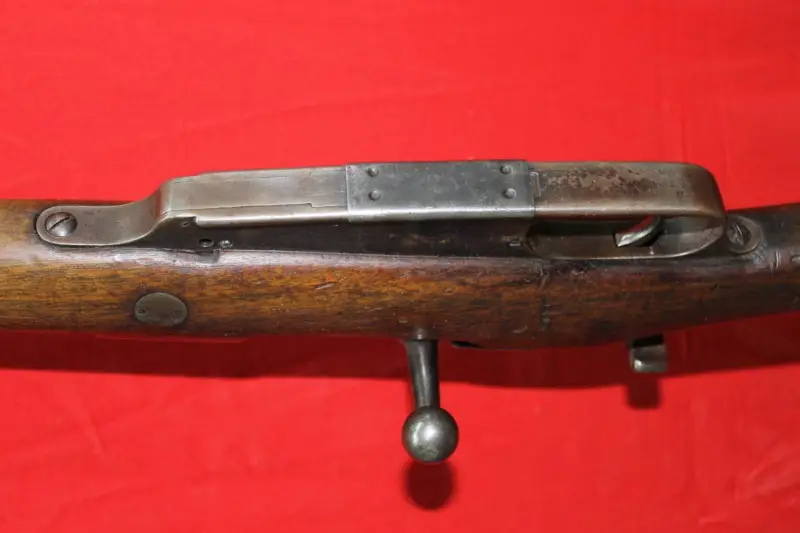
There was nothing left to fall out of the magazine, and the hole in it was closed with a lid. Author's photo
The rifle used a modified Mauser action design from the 71-84 rifle. The bolt head (unlike all later Mauser rifles) was removable.
The commission paid close attention to Mannlicher's earlier designs and also received a stack-loading magazine. The use of Mannlicher's burst loading system was a clear violation of patent law. Therefore, it is not surprising that the Austrians immediately followed up with a lawsuit from the Steyr company regarding violation of Mannlicher’s patents.
But the dissatisfaction of the Austrians was quickly quelled, since they were given the right to produce Gewehr 88 rifles based on orders coming from both Germany and other countries. In addition, Steyr received the right to equip its own rifles with bolts designed by Schlegelmilch.
So, in the end, all the contradictions were resolved to mutual agreement and... benefit!
At the same time, its production was started by such companies as Haenel, Schuler, Loewe and Schilling, as well as the Belgian company August Schriever in Lüttich.
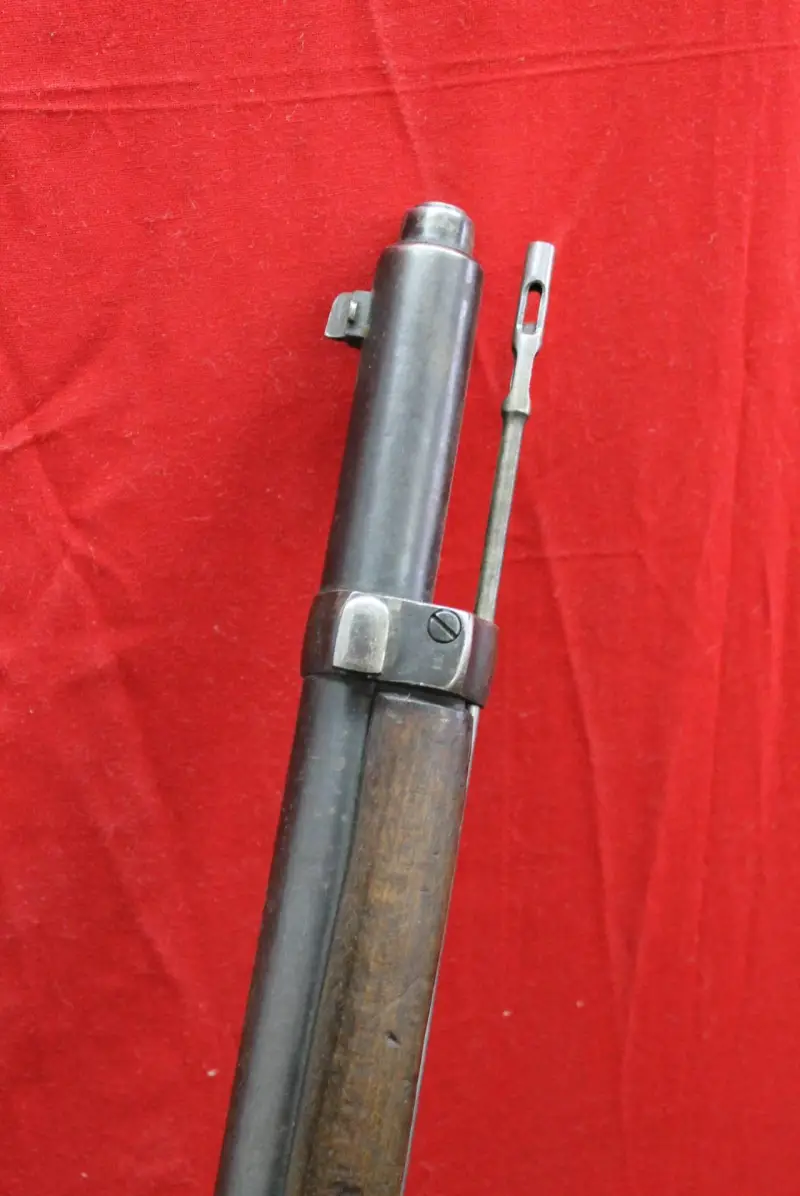
In this photo you can clearly see the barrel casing and the “half-ramrod”. Each rifle had a “half cleaning rod”, but to get a full length cleaning rod, you had to screw two cleaning rods together. Author's photo
Overall, the rifle turned out to be a success!
The trigger mechanism ensured high shooting accuracy. The rifle barrel had a Miega design casing, and the traditional wooden barrel pads were absent. This eliminated the influence of shrinkage of wooden parts from changes in temperature and humidity on the accuracy of fire, and also protected the shooter’s hands from burns when shooting at a high rate. However, such a casing increased the risk of corrosion, because water could get into the space between it and the barrel.
The Karabiner 88 carbine, adopted in 1890 for cavalry service, unlike the rifle, had a shortened barrel, a ramrod and a boss on the barrel for attaching a bayonet were absent. The others were the belt fastenings and the bolt handle, which was bent down for convenience.
The model 1891 carbine Gew.91 also received a hook at the end of the barrel for placing the carbine in the sawhorse.
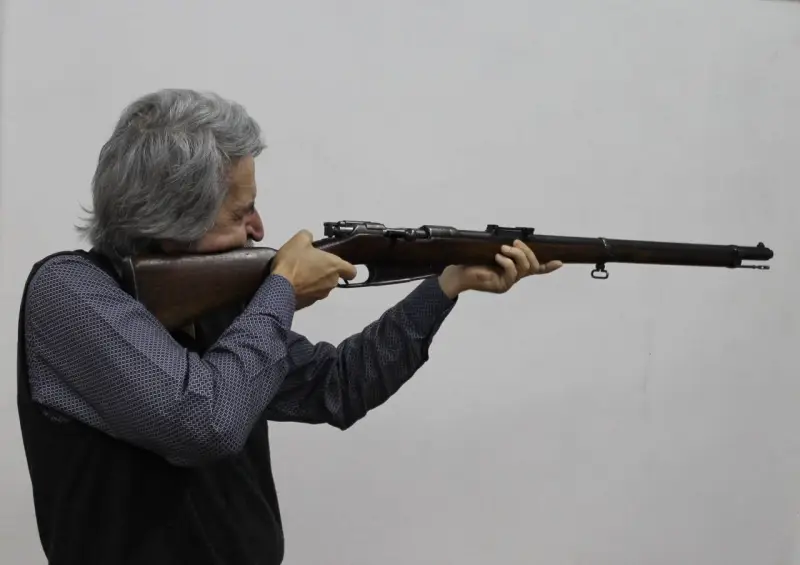
The author with the M88 rifle. It fits very comfortably in your hands. In general, it’s surprising why our military didn’t adopt it? It was enough to change the caliber, remove the barrel casing, make the barrel itself thicker, replace burst loading with clip loading, as the Turks did, and... here you have a wonderful rifle for all times. Moreover, it was then possible to buy the entire production process from the Steyr company. This approach, by the way, was fully consistent with the then approach of the Russian military to arming the army. But... for some reason everything turned out differently... Photo by the author
As a result, when in 1898 the Germans finally received an improved model of the rifle from Mauser, they had no choice but to sell the commission rifles... to sell!
Because of this, a huge number of 1888 rifles were released onto the world arms market. There were hundreds of thousands of them and they were all sold out one way or another and distributed all over the world.
It is interesting that since they used Mannlicher batch loading, they were immediately identified locally with “Mannlichers” and “popularly” began to be called “Haenel-Mannlicher”, “Schilling-Mannlicher”, etc. That is, by the company - to the manufacturer and author of the store!
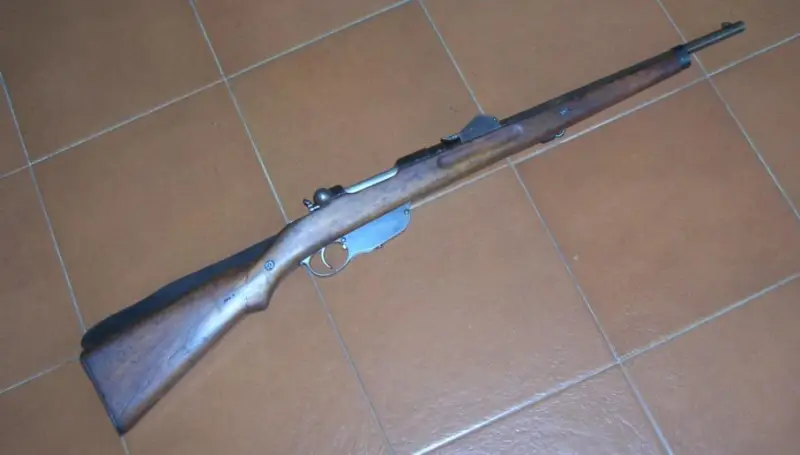
The Karabiner 88 carbine, adopted for service in 1890. Photography by Allen Dobress
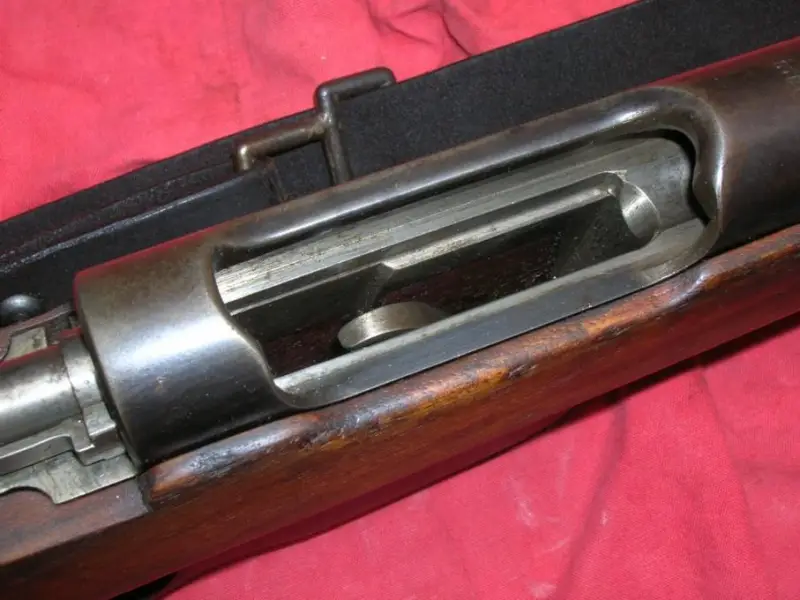
Feeder lever on the M1888 carbine. Photography by Allen Dobress
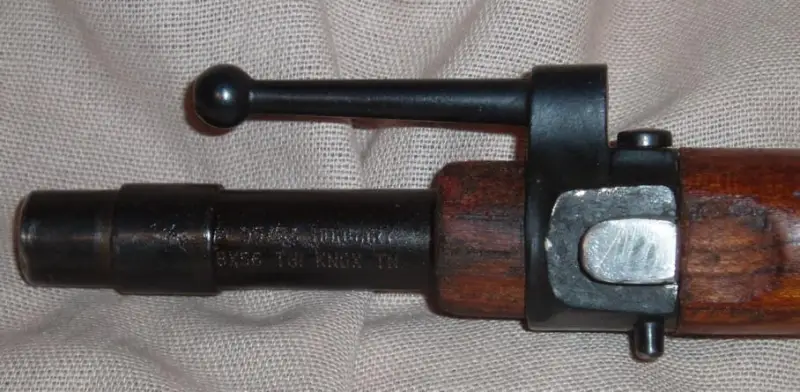
Carbine "Steyr-Manlicher" M1895. At the end of the barrel there was a hook like this for placing it on the sawhorse. Photography by Allen Dobress
The rifle was loaded with the bolt open using a pack designed for five rounds, which was pressed into the magazine well. At the same time, the feed lever in the magazine is compressed and then raised between the walls of the clip, putting pressure on the lower cartridge.
The clip could be removed by pressing the pin in the front of the trigger guard. The forward movement of the bolt allows it to remove the top cartridge from the edges of the pack. When the last cartridge is chambered, the clip falls out of the hole in the bottom of the rifle's magazine.
The main disadvantage of this loading is that if the stack clamps are deformed or rusty, then difficulties may arise with feeding cartridges; and the magazine itself cannot be loaded with cartridges one at a time. Another drawback is less noticeable, but it exists and is very important, although it relates to the sphere of economics.
The fact is that the mass of the pack was 17,5 g, while the plate clip was only 6,5 g. This meant that for every hundred cartridges when loading in batches there was an excess mass of 220 g. For 1 pieces - that’s already two with half a kilogram of metal that had to be smelted, processed, brought into proper form and distributed into positions.
That is why, in the end, batch loading of rifles was abandoned in favor of clip-on loading.
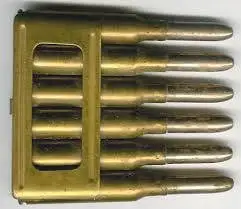
Mannlicher pack for 6,5 mm Italian cartridges
The Italian rifle M 91 (Italienisches Repetier-Gewehr M. 91) was also developed by Mannlicher. True, only the magazine system in this weapon was designed by Mannlicher, but nevertheless this is not so little. This rifle, commonly known as the Mannlicher-Carcano, was used throughout both World Wars as the standard sidearm of the Italian Army.
However, the bolt was a modified Mauser design developed by General Paraviccini (in any case, he headed the commission responsible for its development!) and gunsmith Salvatore Carcano at the Turin Small Arms Factory in Italy. Perhaps it would have been more correct to call it “Paraviccini-Carcano-Manlicher”, but the name turned out to be too long.
The Mannlicher-type clip held six 6,5 mm (.256) Italian caliber weltless cartridges.
Due to the different caliber and shape of the cartridge, the pack of this rifle is different in design from the pack of the Austrian rifle. The cartridges in it lie almost parallel to each other, and the back is straight, not curved.
Interestingly, Italy was the first in Europe to adopt cartridges of this caliber. And then it spread to Japan, Sweden, Norway, Holland, Portugal, Romania and Greece.
Its benefits were obvious - the wounds caused by a 6,5-mm bullet were practically indistinguishable from larger bullets, but the production of such ammunition required less non-ferrous metals, and the soldier could take more such cartridges with him. The Italian magazine was also more capacious - six rounds, versus five rounds for the Germans and Russians.
True, then the Italians adopted a larger caliber cartridge: 7,35x51 M.38. But this happened already in 1938. The Mannlicher-Carcano M91/38 carbine was released for it. But the bulk of the Italian army was still armed with rifles with a 6,5 mm cartridge.
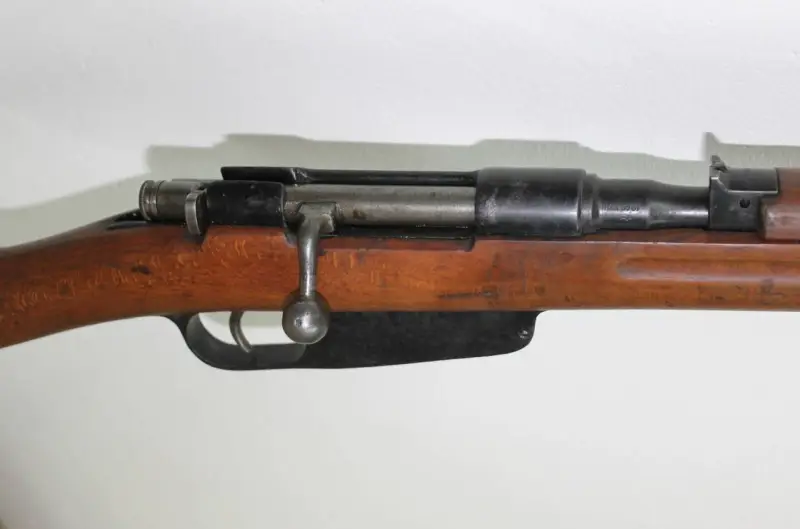
The bolt of the Mannlicher-Carcano M91/38 carbine. Author's photo
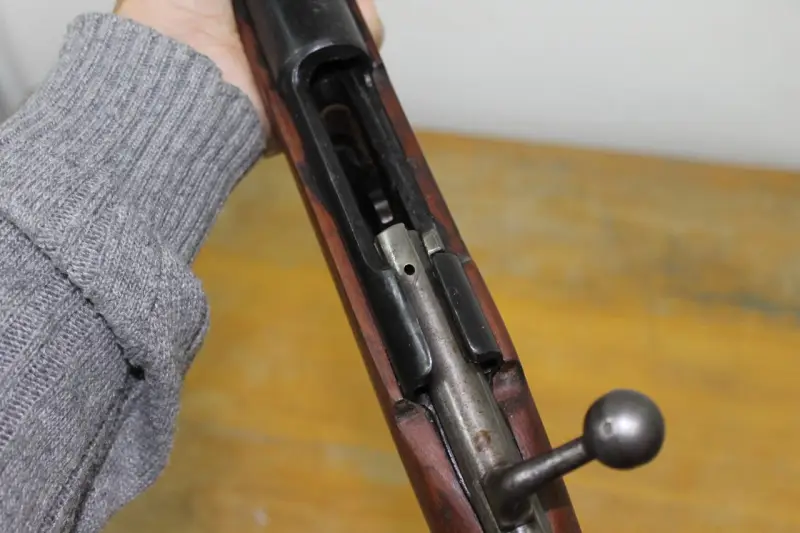
The bolt and feed lever of the Mannlicher-Carcano carbine M91/38. Author's photo
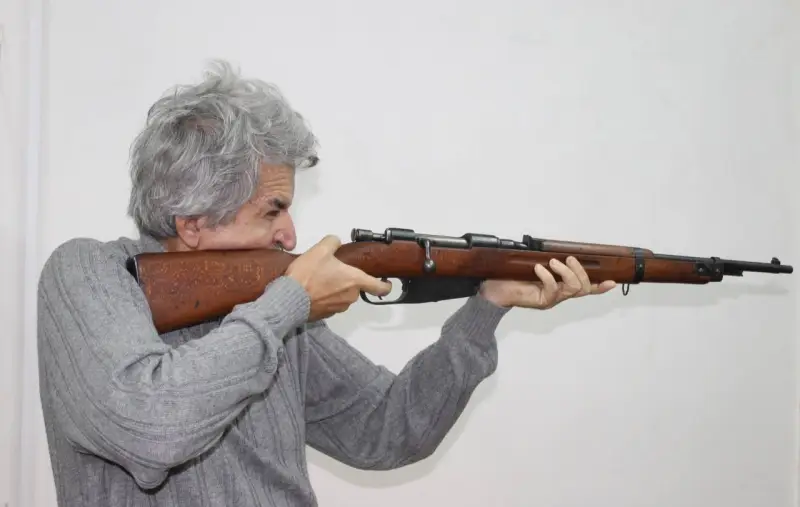
The author with the Mannlicher-Carcano M91/38 carbine. The impression from the carbine is... quite strange. The stock and butt are somehow “plump”. The most important thing is that for some reason the neck of the butt is made too “plump”, so it is not very comfortable to clasp it with your hand, although perhaps this is a subjective feeling. But, probably, it was very convenient to fight with such a carbine as a club...
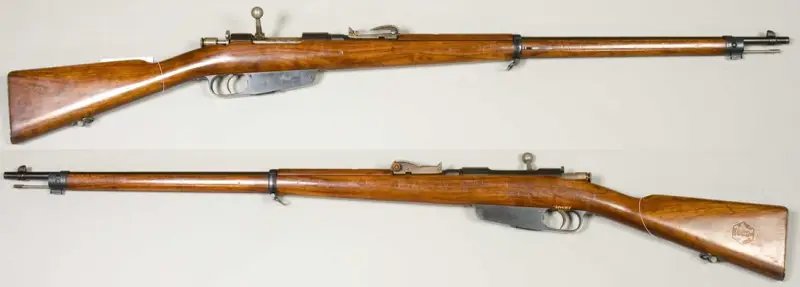
Italian rifle "Mannlicher-Carcano" M1891. Army Museum, Stockholm
Well, now it should be noted that even in those cases when Mannlicher himself did not participate in the creation of this or that type of weapon, his ideas and... his name worked. And this says a lot.

The same rifle, but only with a bayonet. Photo of Dr. Filippo Cianfanelli from Florence
* In 1905 it was replaced by the 7,92x57mm Mauser cartridge with a pointed S-type bullet with a diameter of 8,20 mm and a more powerful powder charge.
** It is interesting that in Russia, when Mosin was given the task for a new rifle, the original sample was also taken from a Lebel rifle caliber 8 mm. Therefore, the first Nagant rifles sent to Russia for testing had the same caliber. And although it was later changed to 7,62 mm, its geometry remained the same, Lebel’s.
Information